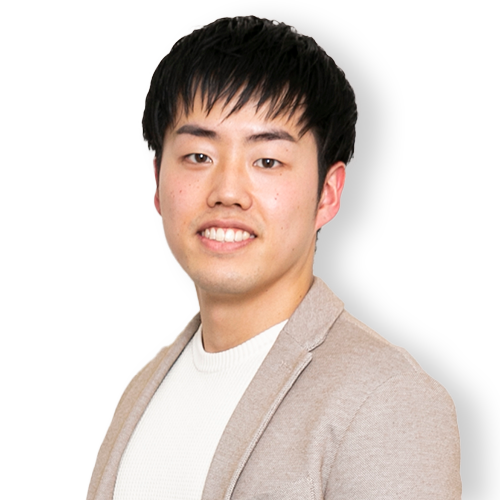From solo study to full-fledged background artist
When I was a middle school student, I was completely blown away by the graphics and backgrounds of the games I was playing at the time, and I knew in the back of my head that I wanted to work in the gaming industry, and move people in the same way.
In university, I learned programming and networking under the Faculty of Communications Engineering. During this time, I'd constantly think about how I could work in the gaming industry and decided to study art in my off-time. I had studied 3D CG tools like Autodesk Maya, Substance Designer, Substance Painter, and when I started job hunting, it became a selling point of my application. At interviews, I was even told, "Wow, you've got an incredible set of skills."
What made me decide to join Sega was its corporate culture, the way it treats its staff, and its workplace environment that allows you to collaborate with people from other occupations. I realized that no matter where I worked, I'd be able to do background design. The way that SEGA values its employees, though, left quite an impression on me. Plus, when I saw how the backgrounds in "Like a Dragon" were an almost perfect replica of Shinjuku, I knew this company was the right fit for me.
Finding satisfaction in the way players react to the works I've designed
As a background designer, I create the natural objects, buildings, and maps for the online game "Phantasy Star Online 2 New Genesis (PSO2: NGS)". So far, I've had a chance to design the huge towers that play a pivotal role in each region. The first time one of the backgrounds I designed was released, I felt this huge sense of accomplishment, like I'd finally made it as a professional designer. In "PSO2: NGS", I've also had the opportunity to design accessories for players to wear, and it fills me with joy when I see players actually wearing them. I've had the chance to converse with long-time producers of the game who've been working on it since release, and I find it rewarding to work on a game that's been made with so much love and care.

"PSO2: NGS" is such a large-scale project that just the design team alone has dozens of members on board. There are many of them who are highly proficient in a variety of technology, so it's always a learning experience when they show me a new tool I ought to be using. SEGA also has a system where one senior employee takes one new employee under their wing, and once a week, the senior employee offers mentorship to the new employee to address their goals or any issues or concerns they have with their tasks or training. For this reason, I find SEGA a very comfortable place to work.
A corporate culture that values challenges and gives its employees ample opportunities
SEGA acknowledges my aspirations and my drive to constantly push myself. The company supports you by offering advice and giving you the outlet you need to push your limits. I came to SEGA, looking to apply the art skills I'd self-studied, and it turned out to be the ideal place for me to grow. I also want to note that SEGA is quite flexible. When the state-of-emergency for the pandemic was declared, they set up a remote work policy the very next day. I only come into the office twice a week currently. As such, I've been able to make the most out of working from home and working at the office.

Going forward, my goal is to one day be entrusted to create an entire map within "PSO2: NGS". To get there, I try to learn all that I can from my colleagues and the development environment of "PSO2: NGS". As a background artist, it's my job to let the audience soak in the sights and sounds of the game. That's why I've had more opportunities lately to take a camera and observe different landscapes and scenery in detail. For example, the way that dirt sticks to gutters, the way that roads bend, and other things from daily life add to my internal repository.
I'd also like to create an environment where we can teach other skills. Personally, I've had many chances to polish the skills that I've learned by listening to and teaching others. I can also freely consult my colleagues online about work matters, and if I said, "I'd like to make this design, but I need some advice," they'd be more than happy to lend me an ear.
It's important to staying informed about the latest technology and trends—and that may be true for people outside of design too. When I'm creating something new, just being able to quickly figure out which tools you'll need will help you raise the efficiency of your tasks immensely, so collecting information is vital to the job. At SEGA, each division provides numerous learning and assessment opportunities, and once you join, you'll find that it's an environment that encourages constant growth. If you're looking for a place to challenge yourself, I recommend applying at SEGA!
*This interview was conducted during the second year of employment.
10:00 AM Arrive at the office, conduct my routine email check, and confirm my duties for the day.
10:30 AM Begin working on designs.
11:30 AM Meeting with the Background Team where we clear up any uncertainties.
12:00 PM Break for lunch with my team members.
1:00 PM Consult with senior members about background designs, then focus on my designs in the afternoon.
3:00 PM Meeting to confirm the contents of the map—I take notes about the sections I'm assigned to work on.
4:00 PM Attend to fixes as requested, and finish off the rest of my tasks.
7:00 PM Work day ends. I lift some weights and study a bit of programming in my off-time.

STAFF INTERVIEWS
















